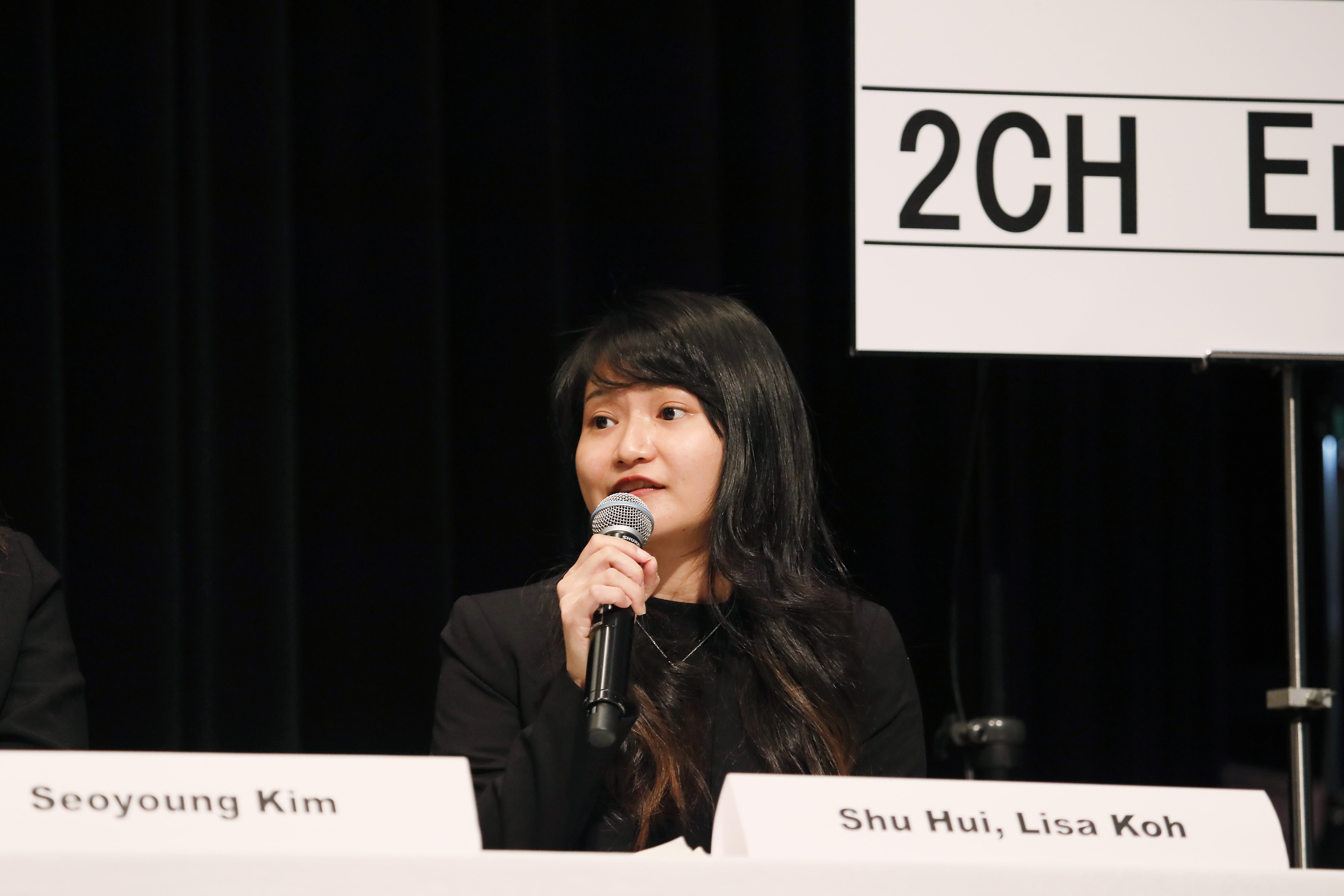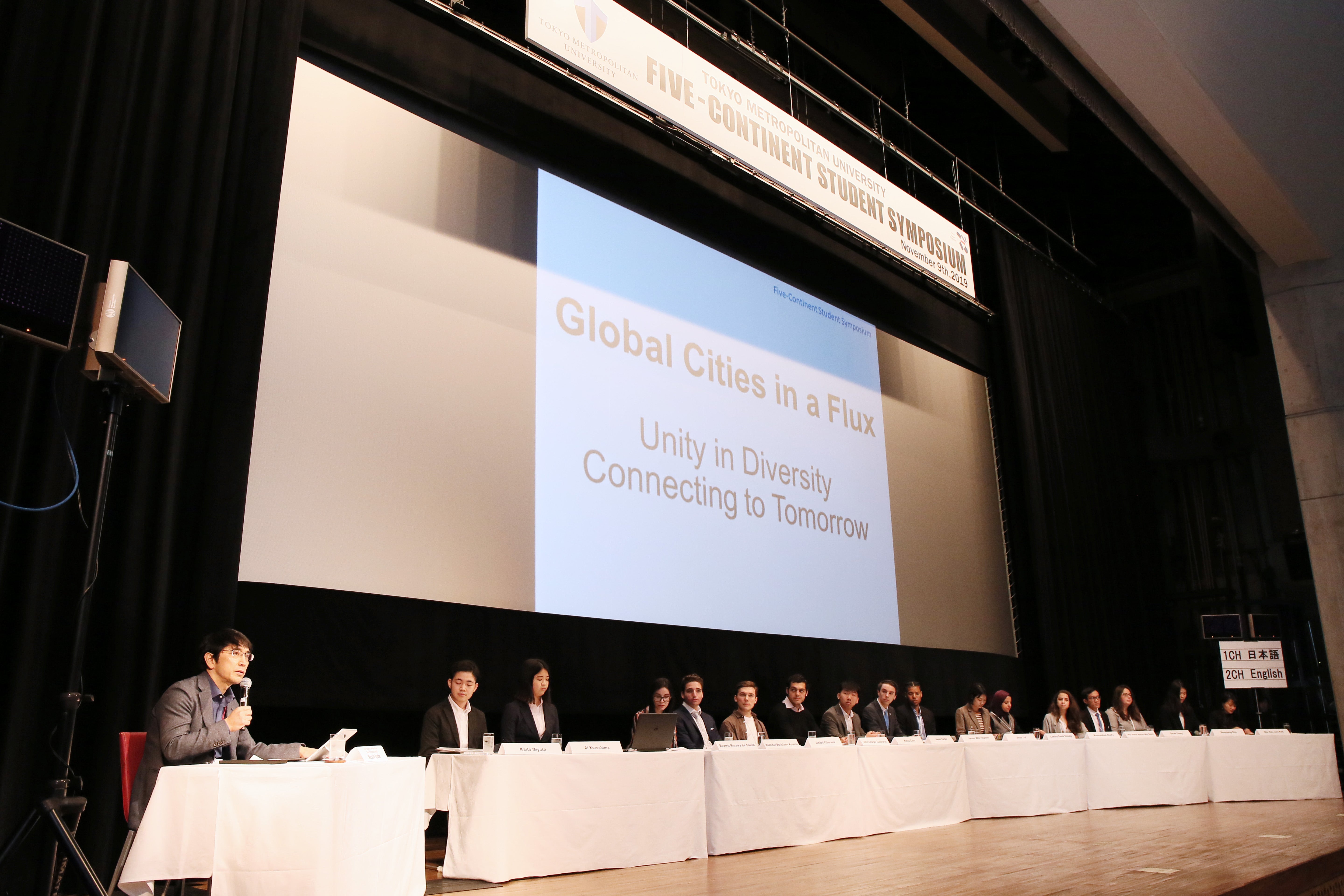Architecture Student Lisa Koh Selected to Represent NUS at Five-Continent Student Symposium As Plenary Session Panelist

Tokyo Metropolitan University (TMU) hosted the Five-Continent Student Symposium from 7 to 9 November 2019 as a supporting programme for the Olympic and Paralympic Games Tokyo 2020. To encourage international exchange, students from over 20 countries and regions across the world and contribute a conducive atmosphere for the Games. Students were given the opportunity to participate in a panel discussion on the theme of “Unity in Diversity”, “Connecting to Tomorrow” – concepts of the Tokyo 2020 Games. The event was one of a kind where students from around the world – London, New York, Egypt, Australia, Malaysia, India, Korea, Japan, just to name a few – gathered to share ideas, perspectives and feedback. At the symposium, participants of the symposium were given a tour of the Tokyo 2020 Olympic venues, as well as opportunities to interact among each other and the local students.

Lisa Koh Shu Hui, who completed her Master of Architecture degree in July 2019, was selected as one of the students to represent NUS at the Five-Continent Student Symposium as a plenary session panelist. The Governor of Tokyo, Yuriko Koike, local journalists, students of TMU as well as members of the public were attendees of the event. Discussions amongst symposium participants covered various topics ranging from drug trafficking, illegal sex trade, and gender equality, citing historical global events as precedents. As a panelist, Koh asked Governor Koike about the imminent future of the lower-income with high-cost preparatory works being done for Tokyo 2020 Olympics, and what could be done to alleviate their situation – a question close in nature to Koh’s Architectural Master thesis. Governor Koike replied it will be important to ensure adequate welfare and education to help fight poverty, as well as foster an environment encouraging social inclusion where all members of society support each other.
Lisa Koh’s Architectural Master thesis, Sanya 山谷: The Forgotten District, is about the homeless in Tokyo, and the forgotten district of Sanya. The district of Sanya in Taito-ward is historically the ‘doya town’ of Tokyo and was one of the three main day labour markets in Japan. With the upcoming Tokyo 2020 Olympics, its prime location and low rental costs, Sanya is an area predicted to see an increase in tourism traffic. On the flip side, with Tokyo raising its expenditure for the Olympics alongside the worsening economy of Japan, the economy is predicted to get worse in the long run. Her thesis sought to find out what would happen to the homeless population in Sanya, and what can be done to alleviate this situation. Through volunteering at different organizations and interviews with the organizers and volunteers who have close relationships with the homeless population within their precinct, fieldwork findings crucially revealed that the root cause of the homeless problem in Tokyo lie in social stigmas towards them.

This phenomenon is apparent in welfare measures and policies aimed at making them ‘invisible’ from the public sphere, such as Seikatsuhogo, emergency shelters and welfare centers. Both infrastructural and social problems were analyzed, and the political system of managing the homeless were challenged whilst proposing alternative systems and urban interventions to provide them with jobs and proper housing conditions. By using the Tokyo 2020 Olympics as a boost to kickstart the economic structure of Sanya with the increase in tourism, architectural interventions can be appropriated to further create a self-sustainable economy that would allow the homeless to obtain independence and a self-sustainable livelihood.
For more information, please visit:
http://www.metro.tokyo.jp/english/topics/2019/1031_01.html
https://www.tmu.ac.jp/english/international/tmu-five-continent.html